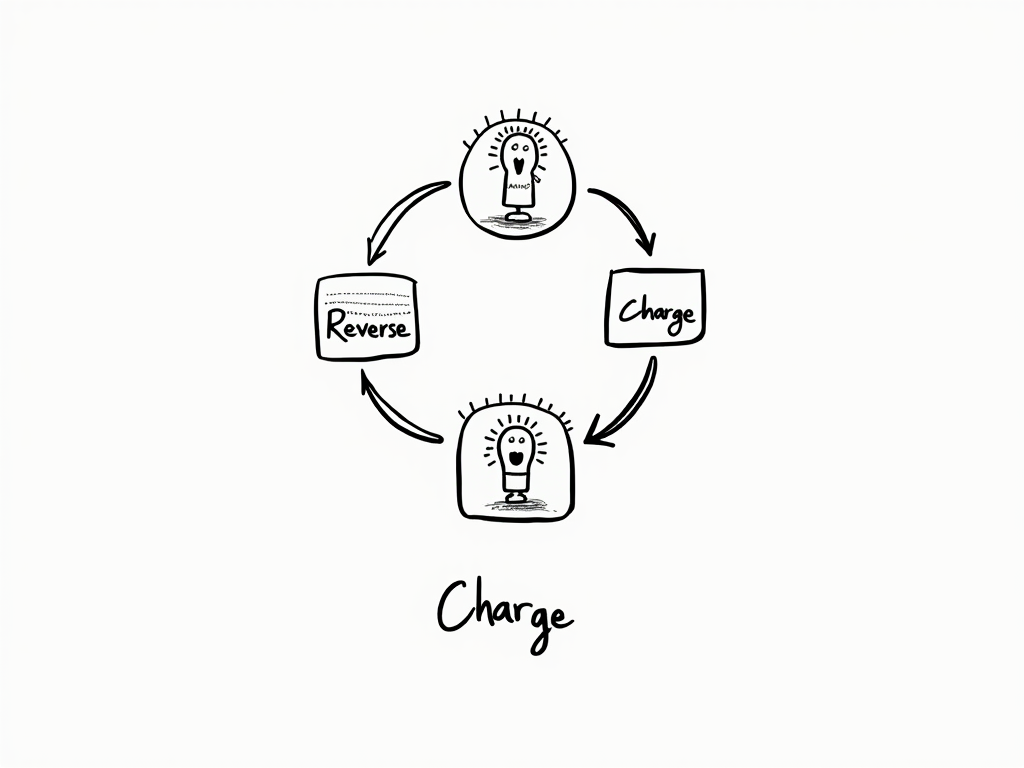
Tax Obligations for Freelancers in Estonia: Your Complete Guide to Compliance
Reading time: 13 minutes
Table of Contents
- Introduction: The Estonian Freelance Landscape
- Registration Requirements for Freelancers
- Understanding Estonian Tax Structures
- Essential Filing Obligations
- Maximizing Your Deductions
- The E-Residency Advantage
- Common Compliance Pitfalls
- Practical Record-Keeping Strategies
- Conclusion: Building Your Sustainable Freelance Practice
- Frequently Asked Questions
Introduction: The Estonian Freelance Landscape
Considering Estonia’s digital-first economy, freelancing here isn’t just a career alternative—it’s increasingly becoming the mainstream choice for many professionals. With its progressive e-government systems and straightforward tax framework, Estonia offers freelancers a refreshingly transparent environment to operate in.
But let’s face it: navigating tax obligations can feel like deciphering an ancient language, regardless of how streamlined the system claims to be. If you’re wondering whether you need to register as an FIE (Füüsilisest isikust ettevõtja) or establish an OÜ (Osaühing), or if you’re simply trying to determine which expenses you can legitimately deduct—you’re in the right place.
This guide isn’t about abstract concepts. It’s about giving you the practical tools to manage your tax obligations efficiently while maximizing your legitimate advantages under Estonian law. Whether you’re a digital nomad leveraging Estonia’s e-Residency program or a local freelancer building your client base, understanding these tax fundamentals isn’t just about compliance—it’s about creating sustainable financial foundations for your independent career.
Registration Requirements for Freelancers
Before diving into tax filings, you need to establish your legal structure. Estonian freelancers typically choose between two main paths:
The Sole Proprietor (FIE) Route
If you’re just starting out or have relatively straightforward operations, registering as an FIE (Füüsilisest isikust ettevõtja) might be your best option. The process is refreshingly simple:
- Register through the Business Registry portal or visit any Physical Registration Office
- Complete the application form with personal details and business activity codes
- Pay the state fee of €13 (if done electronically) or €27 (for paper applications)
- Receive confirmation typically within 2-3 working days
As Maria Kukk, a freelance graphic designer from Tartu, discovered: “I expected bureaucratic hurdles when registering as an FIE, but the process took me literally 20 minutes online. The challenging part came later—understanding which expenses I could legitimately claim against my income.”
The Limited Liability Company (OÜ) Alternative
For freelancers with higher earnings, international clients, or those seeking more substantial liability protection, establishing an OÜ (Osaühing) offers distinct advantages:
- Greater separation between personal and business assets
- More flexibility in tax planning (especially with Estonia’s deferred corporate tax system)
- Enhanced credibility with certain clients
- Easier to scale as your business grows
The registration process requires a minimum share capital of €2,500 (though this can be deferred), and can be completed entirely online through Estonia’s e-Business Register if you have an Estonian ID card, Mobile-ID, or e-Residency credentials.
Understanding Estonian Tax Structures
Estonia’s tax system has earned international recognition for its transparency and efficiency. For freelancers, several key tax components require attention:
Income Tax Framework
Estonia applies a flat 20% income tax rate to most types of income. However, there’s a crucial benefit: the annual tax-free income allowance of €6,000 (or €500 monthly). This means your first €6,000 of annual income is essentially tax-free—a significant advantage for early-stage freelancers or part-time professionals.
Real-world scenario: Markus, a freelance software developer earning €30,000 annually, benefits from this structure by properly timing his income recognition. “By spreading my invoicing strategically throughout the year rather than creating artificial peaks, I ensure I maximize my monthly tax-free amount,” he explains.
Social Tax Considerations
Social tax in Estonia is 33% of your taxable income and covers your health insurance and future pension benefits. This represents a significant portion of your tax burden but provides comprehensive social security coverage.
If you operate as an FIE, you’ll pay social tax quarterly based on declared business income. For OÜ owners, social tax applies to board member salaries and other employment-related payments.
A crucial detail many freelancers miss: There’s a minimum social tax obligation of €192.72 monthly (as of 2023), calculated from the minimum monthly base of €584. Even during months with low or no income, this minimum obligation typically applies unless you qualify for specific exemptions.
Essential Filing Obligations
Understanding what to file and when is fundamental to your tax compliance strategy:
Key Filing Deadlines
Missing tax deadlines can result in penalties and unnecessary stress. Mark these critical dates in your calendar:
- Quarterly Tax Prepayments (FIE only): 15th of the second month following each quarter (May 15, August 15, November 15, February 15)
- Annual Income Tax Declaration: January 15 to April 30 of the following year
- VAT Returns (if registered): 20th of each month for the previous month
- Annual Business Income Declaration (Form E): Due with your annual tax return by April 30
As Kristjan Tamm, a business consultant with six years of freelance experience, advises: “Don’t wait until April to organize your finances. I set aside one hour every week to update my records, which makes tax filing almost effortless.”
Documentation Requirements
The Estonian Tax and Customs Board (EMTA) values digital efficiency, but proper documentation remains essential:
- Keep all business expense receipts for 7 years
- Maintain separate business and personal bank accounts (particularly important for FIEs)
- Document business purpose for all claimed expenses
- Preserve client contracts and project specifications
- Record working time logs if your services are time-based
“The shift to digital receipts has simplified my record-keeping immensely,” shares Anna Saar, a freelance translator. “I use a dedicated app to scan paper receipts immediately, tag them with the client project, and store them in categorized digital folders.”
Maximizing Your Deductions
One of the most powerful ways to optimize your tax position is through legitimate business expense deductions:
Allowable Business Expenses
Estonia applies a “business purpose” test to expenses: if an expense is wholly and exclusively for business purposes, it’s generally deductible. Common deductible expenses include:
- Home office expenses (proportional to business use)
- Professional equipment and software
- Internet and communications costs
- Professional training and development
- Business travel and accommodation
- Marketing and advertising
- Professional association fees
- Business insurance premiums
Strategic Deduction Planning
While claiming legitimate deductions is your right, strategic planning can enhance your tax efficiency:
Consider the experience of Toomas, a freelance photographer who adjusted his equipment purchasing strategy: “Instead of making one large equipment purchase at year-end, I spread acquisitions throughout the year. This helps maintain a more consistent cash flow and avoids raising unnecessary flags with large, isolated deductions.”
For home office deductions, maintain clear documentation of the portion of your home used exclusively for business. A floor plan with measurements can serve as supporting evidence if questioned.
| Expense Category | FIE Deductibility | OÜ Deductibility | Documentation Required | Common Pitfalls |
|---|---|---|---|---|
| Home Office | Proportional to business use | Requires formal rental agreement | Floor plan, utility bills, calculations | Claiming entire home costs |
| Business Travel | 100% if business-related | 100% if business-related | Receipts, meeting agendas, purpose note | Mixing personal travel |
| Meal Expenses | Limited deductibility | 50% deductible for business meetings | Receipts with attendee names, purpose | Regular meals without business context |
| Vehicle Expenses | Logbook required for partial use | Logbook required for partial use | Detailed logbook, receipts | Incomplete mileage records |
| Digital Subscriptions | 100% if exclusively for business | 100% if exclusively for business | Invoices, business purpose note | Personal-use subscriptions |
The E-Residency Advantage
Estonia’s pioneering e-Residency program offers non-Estonian freelancers a unique opportunity to operate within the EU digital framework.
Tax Implications for E-Resident Freelancers
If you’re an e-resident freelancer operating an Estonian company, understanding your tax residency is critical. Estonia follows these primary principles:
- Physical presence of 183+ days in Estonia establishes tax residency
- E-residency alone does not create tax residency
- Your personal tax obligations likely remain in your country of residence
- Your Estonian company is subject to Estonian corporate tax rules
“The greatest misconception I encounter,” notes tax advisor Liina Mets, “is that e-residency creates some form of tax haven. In reality, it provides administrative efficiency, not tax avoidance. You must still comply with tax obligations in your country of residence.”
Streamlined Compliance Through Digital Tools
E-residency provides access to Estonia’s digital infrastructure, offering remarkable efficiency for tax compliance:
- File taxes entirely online regardless of your physical location
- Digital signing of all tax documents
- Automated calculations that reduce errors
- Instant submission confirmation
- Transparent processing status updates
Digital nomad Thomas Weber shares: “Operating through Estonia’s digital ecosystem reduced my administrative burden by approximately 70% compared to my previous experience in Germany. The pre-filled tax forms and intuitive interface transform tax compliance from a dreaded chore to a straightforward task.”
Common Compliance Pitfalls
Even with Estonia’s streamlined system, freelancers frequently encounter certain challenges:
Navigating VAT Requirements
VAT registration becomes mandatory once your annual turnover exceeds €40,000. However, strategic voluntary registration before reaching this threshold can be advantageous if:
- You work primarily with VAT-registered businesses that can reclaim the VAT
- You have significant VAT-eligible purchases you want to reclaim
- You want to project a more established business image
The VAT rate in Estonia is 20% for most services, with reduced rates for specific categories. VAT returns must be filed monthly by the 20th day of the following month.
Eva, a freelance marketing consultant, learned this lesson the hard way: “I delayed my VAT registration by two months after crossing the threshold, resulting in back payments plus a penalty. Now I monitor my cumulative turnover monthly and have set an alert at €35,000 to prepare for registration.”
Addressing Cross-Border Taxation
For freelancers working with international clients, understanding where your service is “consumed” for tax purposes is crucial:
- B2B services are generally taxed where the client is established (destination principle)
- B2C services typically follow different rules depending on service type
- Digital services to EU consumers fall under special VAT rules
Estonia has tax treaties with over 60 countries to prevent double taxation. Familiarize yourself with the relevant treaty if you have significant income from foreign sources.
Practical Record-Keeping Strategies
Effective tax compliance starts with systematic record-keeping:
Digital Systems for Tax Efficiency
Estonia’s digital-first approach allows for sophisticated yet user-friendly record-keeping:
- Cloud-based accounting software: Platforms like Xolo, Accounting.ee, or SimplBooks integrate directly with Estonian tax systems
- Digital receipt management: Use apps that capture, categorize, and store expense documentation
- Automated bank feed integration: Connect your business account for real-time transaction recording
- Calendar integration: Set automated reminders for quarterly and annual tax deadlines
“My breakthrough came when I stopped treating accounting as a separate activity,” explains Mikk, a freelance UX designer. “Now my systems capture financial data as a natural byproduct of my daily work. When I send an invoice, it’s automatically recorded. When I scan a receipt, it’s categorized immediately.”
Separating Personal and Business Finances
Maintaining clear boundaries between personal and business finances is essential, especially for FIEs where the legal separation is less defined:
- Establish dedicated business banking accounts
- Use separate payment cards for business expenses
- Create clear protocols for handling mixed-use assets
- Document transfers between personal and business accounts
For entrepreneurs using the OÜ structure, proper documentation of money flows between you and your company is critical. Board member fee payments, dividends, and expense reimbursements each have specific documentation requirements and tax implications.
Conclusion: Building Your Sustainable Freelance Practice
Navigating Estonian tax obligations as a freelancer isn’t just about avoiding penalties—it’s about creating financial clarity that supports your long-term success. By understanding your registration requirements, filing obligations, legitimate deductions, and record-keeping best practices, you transform tax compliance from a stressful burden into a strategic advantage.
Whether you operate as an FIE for simplicity or an OÜ for scalability, whether you’re an Estonian resident or a digital nomad leveraging e-Residency, the fundamental principles remain consistent: maintain clear documentation, understand your obligations, and approach tax planning as an integral part of your business strategy.
Remember that tax regulations evolve, and staying informed is part of your professional responsibility. Consider scheduling an annual review with a tax professional who specializes in freelance taxation to ensure your approach remains optimized as both your business and Estonian regulations develop.
With Estonia’s digital infrastructure and transparent tax system as your foundation, you can focus your energy where it belongs—on delivering exceptional value to your clients and growing your freelance practice with confidence.
Frequently Asked Questions
Is it better for an Estonian freelancer to register as an FIE or establish an OÜ?
The optimal structure depends on your specific circumstances. An FIE (sole proprietorship) offers simplicity and lower administrative burdens, making it ideal for freelancers with straightforward operations and revenues below €40,000. An OÜ (limited company) provides better liability protection, more tax planning opportunities with Estonia’s deferred corporate taxation, and enhanced credibility with certain clients. OÜs become increasingly advantageous as your income grows, especially above €40,000 annually, or if you plan to reinvest profits into business growth rather than immediately withdrawing all earnings. Consider consulting with a tax advisor for personalized guidance based on your specific income level, growth plans, and risk profile.
How does Estonia’s e-Residency program affect my tax obligations as a freelancer?
Estonia’s e-Residency program provides digital access to Estonia’s business environment but does not automatically create tax residency. As an e-resident freelancer with an Estonian company, your company is subject to Estonian corporate tax rules (with tax generally due only when profits are distributed), but your personal income tax obligations typically remain in your country of residence. The primary advantage is administrative efficiency—you can manage your Estonian company entirely online, including tax filings. However, you must still comply with your home country’s tax regulations, including potentially declaring income from your Estonian company. Be particularly aware of “place of effective management” rules in your country that might affect the tax treatment of your Estonian company.
What are the most commonly overlooked tax deductions for Estonian freelancers?
Estonian freelancers frequently miss several legitimate deductions that could significantly reduce their tax liability. Home office expenses (proportional to business use) are often underutilized; you can deduct a percentage of rent, utilities, internet, and maintenance based on the area exclusively used for business. Professional development costs, including courses, books, and conference attendance, are fully deductible when directly relevant to your field. Health insurance premiums for FIEs are partially deductible within certain limits. Software subscriptions and digital tools essential for your work qualify for full deductions. Additionally, retirement contributions to the voluntary “third pillar” pension scheme offer tax advantages worth exploring. Always maintain clear documentation connecting these expenses to your business activities to support your deductions if questioned by tax authorities.



